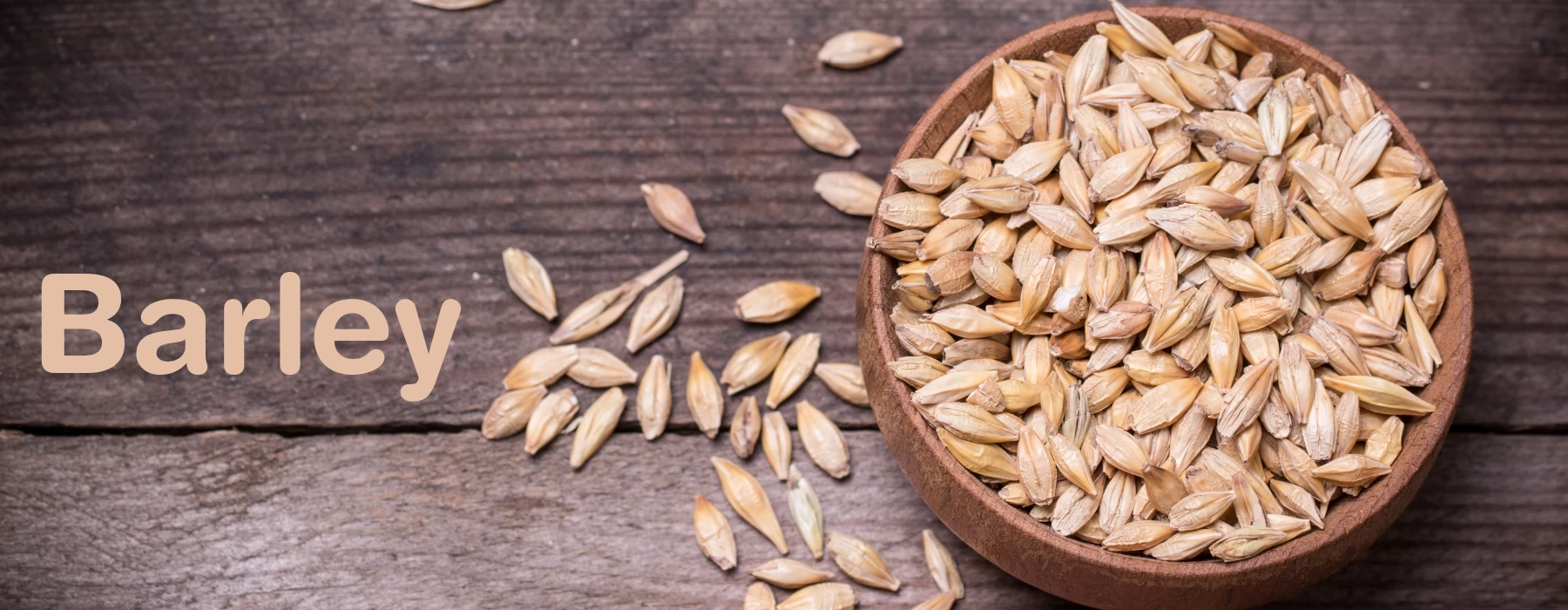Barley
Barley

Barley is a cereal grain with chewy texture and is the seed of a grass grown in temperate climates. It is available in two types: hulled barley and pearled barley. Hulled barley is healthier as it is whole grain and only the non edible portion is removed from it. In pearled barley, the fibrous portion, bran is removed, but still it is a good source of some nutrients. Nutritional facts of uncooked hulled barley per 100 gms:
|
Calories |
354 |
|
Carbohydrates |
73.5 gms |
|
Fiber |
17.3 gms |
|
Protein |
12.5 gms |
|
Fat |
2.3 gms |
|
Thiamine |
43% of RDI |
|
Riboflavin |
17% of RDI |
|
Niacin |
23% of RDI |
|
Vitamin B6 |
16% of RDI |
|
Folate |
5% of RDI |
|
Iron |
20% of RDI |
|
Magnesium |
33% of RDI |
|
Phosphorus |
26% of RDI |
|
Potassium |
13% of RDI |
|
Zinc |
18% of RDI |
|
Copper |
25% of RDI |
|
Manganese |
97% of RDI |
|
Selenium |
54% of RDI |
Main fiber found in barley is a soluble fiber, beta glucan. It is known to decrease cholesterol level and also improve blood sugar control. Barley has a low glycemic index (lowest of all grains), making it a smart choice for diabetic people. High fiber content makes barley beneficial for digestion related issues. According to some studies, barley can reduce constipation, improve symptoms of certain bowel syndrome, and increase the number of beneficial gut bacteria. Barley also helps in reducing weight and lowering the cholesterol level.
Barley is not suitable for anyone having celiac disease or other intolerances to wheat as it also contains gluten. If you take sugar lowering medicines or insulin, you should take caution while taking barley, as it has a very strong effect on blood sugar levels.
